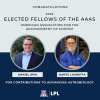Semester Newsletter
Biannual newsletter featuring stories about the department, faculty, graduate students, and alumni.
Monthly Newsletter
Monthly newsletter showcasing the latest research and science from LPL.
SUBSCRIBE TO LPL NEWS
Get the latest news delivered to your inbox.





